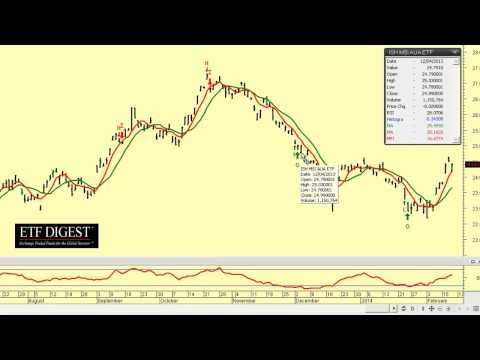RPTHedge funds look to put strategies into ETFs to lure more investors
Post on: 1 Апрель, 2015 No Comment

(Repeats to additional subscribers, no change to headline or text)
By Ashley Lau
NEW YORK, March 10 (Reuters) — More client-hungry hedge fund managers are looking to put their investment strategies to work in exchange-traded funds, a move that could exponentially expand their pool of investors but requires them to slash investment management fees.
That is a tradeoff many managers of smaller hedge funds are willing to make, hoping Mom and Pop investors can fuel their growth. Smaller funds are often less able to attract assets from large pension funds and institutions that prefer the biggest hedge funds with billions in assets and long track records.
It’s a matter of access, said Mebane Faber, chief investment officer at California-based Cambria Investments, whose global tactical hedge fund was shuttered and reinvented as the Global Tactical ETF in October 2010.
His ETF now holds some $40 million in assets. He declined to discuss how much growth that represents over his former hedge fund, but he has found it worthwhile enough to consider converting another of his two remaining private funds.
Such moves may become more common because of changes occurring in the $2.4 trillion global ETF space. Exchange-traded funds were originally conceived of as passive index-tracking investments, but more are now actively managed and use alternative strategies like arbitrage and short selling of stocks. (Graphic: link.reuters.com/syd57v )
ETFs can be traded like common stock, making them more accessible than actively managed mutual funds, thus easier to market for a fund manager.
The U.S. Securities and Exchange Commission is considering a rule that would allow ETF managers to disclose their holdings less frequently than the current daily requirement. Several large ETF issuers have filed proposals to prolong the disclosure period, but none have been approved yet. Such a change would make ETFs more appealing to privacy-dependent hedge managers.
TRADE OFFS
Switching to an ETF may not appeal to the biggest, most well-known and highest earning hedge fund managers, who would have to cut their fees drastically. Big hedge fund managers typically charge an annual management fee of 2 percent of total assets, plus a performance fee of 20 percent of profits. ETF managers typically charge fees of less than 1 percent.
But cutting fees may make sense for some smaller hedge funds, allowing them to lure more investors and grow assets. Most hedge funds require investors to put millions of dollars into the fund, which limits the investor pool to very wealthy individuals. ETFs do not have such minimum investments, so they can attract investors who are not as wealthy.
A hedge fund manager who lowers his or her fees to switch from a hedge fund to an ETF status may have to more than double assets under management to earn the same amount of fees.
It’s often the managers who are less well-known or struggling to attract assets, said John Shearman, chief executive officer at California-based IV Lions LLC and a longtime hedge fund consultant. Some of these managers are trying to grow their business but struggling to compete in a hedge fund market that’s increasingly dominated by larger funds, and so they move to the mutual fund or ETF market.
ALTERNATIVE AND ACTIVE GROWTH
Growth in alternative and actively managed ETFs is also paving the way for hedge funds to make the transition. As of the end of December, there were 221 alternative ETFs with $11.6 billion in assets, up 28.2 percent in one year alone, according to data from State Street Global Advisors. Alternative ETFs include hedge-like strategies including merger arbitrage, long/short and volatility plays.
Actively managed ETFs, which also include some alternative strategies, also had a robust year in 2013, with 20 new fund launches, the largest annual count in the past six years, according to data from San Francisco-based ETF.com.
It’s only logical that existing hedge funds would try to move into that space, said John Rekenthaler, vice president of research at Chicago-based Morningstar. I’m surprised we haven’t seen more of that given how much money and attention is flowing into registered funds, ETFs and mutual funds offering alternative strategies.
DEMOCRATIZATION
Mark Yusko, chief executive officer at Chapel Hill-based Morgan Creek Capital Management LLC, who manages funds of hedge funds only available to qualified investors, sees the ETF space as ripe for his kind of approach.
There are so many good strategies that the average person just can’t get exposure to if they’re not a qualified purchaser or a qualified client, said Yusko.
Yusko said he has been in talks with ETF firms about creating an ETF that would mimic some of his hedge-like strategies. The active ETF would include traditional investments in stocks, bonds and cash, as well as some hedging strategies such as arbitrage, the concurrent buying and selling of securities to take advantage of price differences, or long/short investing, which involves hedging securities purchases with simultaneous sales of borrowed similar securities.

The idea is to bring the institutional model down to a level where everyday investors would be able to access his strategies so that people like my mom can invest in what we do, whereas she was never allowed to before, Yusko said.
Tax efficiency and lower cost are two key attributes that make the funds more attractive to retail investors.
NECESSARY COMPROMISES
Still, hedge fund managers moving to an ETF structure may have to compromise on some of their strategies. Regulators have loosened rules governing ETF investments, but there are still constraints on how they can use leverage or invest in certain derivatives, illiquid securities and private investments.
Yusko noted, for example, that an ETF would not be able to invest directly in privately offered securities. It would have to approach that market through a proxy, such as a master limited partnership.
For some hedge fund managers, one more piece must fall into place before they move into ETFs. They must get SEC permission to shield their holdings and strategies from daily disclosures.
Hedge funds often use illiquid securities that are hard to value on a daily basis, often valued at the discretion of a fund manager. Publicly traded ETFs must disclose their contents daily.
Using only part of a true private fund strategy could create a divergence in performance, Shearman said.
Ninety-nine out of 100 times, you lose something — something that can’t be done in that (ETF) wrapper, Shearman said, referring to parts of the overall hedge fund strategy that cannot be replicated in an ETF.
THE WAIT FOR NON-TRANSPARENT ETFs
Several large asset managers, including BlackRock, State Street, and Eaton Vance have asked the SEC to let them market actively managed ETFs that would report holdings quarterly instead of daily. Some in the industry say the proposals may be approved later this year or early next year.
We don’t want anyone to see what we’re doing at least for a week or a month, that’s the rub, said McLean, Virginia-based hedge fund manager and registered investment adviser Sunil Pai, whose firm ProForza Advisors LLC is considering putting two of their strategies into an ETF. It’s part of our edge — we just can’t let it go. (Reporting by Ashley Lau; editing by Linda Stern and David Gregorio)














